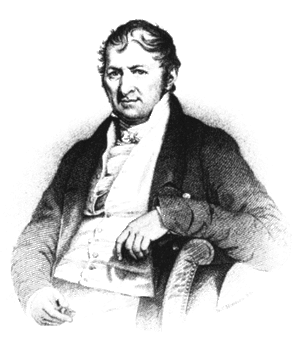Biography
Inventor. Eli Whitney was born on a farm in Westborough, Massachusetts, spending most of his young life in his father's tool shop. He repaired tools and constructed many everyday useful implements. His mother died when he was eleven. At age twelve, Eli displayed a look into his future. What made his father's silver watch tick? He promptly opened the watch while removing all the parts. The thought of an angry father compelled him to reassemble the device. The watch continued to keep perfect time. During the Revolutionary War, the British blockade made many staples unavailable to the colonies. However; enterprising fifteen year old Eli found a way to forge nails in his fathers workshop and had a going business selling them to builders. Unable to attend college because of lack of money, the youngster obtained a teaching position while attending Leicester Academy to hone his academic skills. Four years later he enrolled at Yale. Upon graduation, he was engaged as a tutor for the children of Mrs Nathanael Greene, the widow of the famous Revolutionary general. While at her plantation 'Mulberry Grove' in Georgia, he heard Southern cotton growers were in a quandary over the separation of seeds from the lint. He studied the cotton plant carefully and began to work on a machine and six months later the finished product was the cotton gin. The invention was able to clean a thousand pounds a day. It had taken a slave all day to clean one pound by hand. The device was not only an economic bonanza for the South but also the North which had the mills for making cotton into cloth. Whitney with a partner opened a factory in Hamden, Connecticut, an endeavor to manufacture the gin in an attempt to cash in on the device. The company was soon in jeopardy with production problems and then the building was destroyed including their stock of gins. However, within seven months they were again in business but more problems plagued the operation causing them to get out of the gin business and start making muskets for the U.S. government. Whitney had perfected a way to manufacture them by machine so that the parts were interchangeable. A deal was struck to supply the government with 10,000 musket kits. He not only became wealthy but the country's foremost arms supplier. He married late in life, at the age of 51, he took young Henrietta Edwards as his bride and the union produced four children including one son Eli Whitney Jr. who also became a famous innovator and inventor. His health began to fail due to an enlarged prostate. His inventiveness led to self designing a device that helped relieve the pain but he finally succumbed to the disease at age 56 at his residence in New Haven. Postscript: Whitney could not have foreseen the ways in which the cotton gin would change society. The growth of slavery increased. Cotton became so profitable it greatly increased the demand for slave labor. Today at Mulberry Grove, Port Wentworth, Ga., the foundation still stands on which the first cotton gin was erected. A State Historical Marker has been erected at the nearby city hall in Port Wentworth proudly proclaiming the area as the birthplace of the gin. However most of the legacy is located at Hamden, Connecticut. The New Haven Historical Society has preserved what is left of the Whitney factory complex which was located on the Mill River using it as the power for running machinery. Whitney constructed a low dam and waterwheels that made possible the Whitney Armory and its adjacent small settlement of Whitneyville where the employees lived. Eli Whitney developed the manufacturing village for 25 years until his death. Some eighteen buildings in the complex have been destroyed. The centerpiece of the settlement was the barn and the small farm. It supplied the boarding house kitchen and provided shelter for the draft animals used at the Armory. Today the site in Hamden is maintained by the New Haven Historical Society. It contains the Eli Whitney Museum and the preserved Whitney Barn, The unmarried Workers Boarding House and the Fuel Shed. It contains a trove of artifacts which continues to grow from continuing archeological digs. The Eli Whitney Technical High School is nearby where students can learn the skills of a trade as well as academics. (bio by: Donald Greyfield (inactive))
Sources
It may be possible to confirm family relationships with Eli by comparing test results with other carriers of his Y-chromosome or his mother's mitochondrial DNA. Y-chromosome DNA test-takers in his direct paternal line on WikiTree:
- Ernest Whitney
 :
Family Tree DNA Y-DNA Test 111 markers, haplogroup R-M269, FTDNA kit #90584
:
Family Tree DNA Y-DNA Test 111 markers, haplogroup R-M269, FTDNA kit #90584 - Johnny Whitney
 :
Family Tree DNA Y-DNA Test 37 markers, haplogroup R-M269, FTDNA kit #882201
:
Family Tree DNA Y-DNA Test 37 markers, haplogroup R-M269, FTDNA kit #882201 - Curtis Whitney
 :
Family Tree DNA Y-DNA Test 37 markers, haplogroup R-M269, FTDNA kit #8223
:
Family Tree DNA Y-DNA Test 37 markers, haplogroup R-M269, FTDNA kit #8223
Have you taken a DNA test? If so, login to add it. If not, see our friends at Ancestry DNA.
Featured National Park champion connections: Eli is 8 degrees from Theodore Roosevelt, 19 degrees from Stephanus Johannes Paulus Kruger, 11 degrees from George Catlin, 14 degrees from Marjory Douglas, 22 degrees from Sueko Embrey, 11 degrees from George Grinnell, 22 degrees from Anton Kröller, 11 degrees from Stephen Mather, 22 degrees from Kara McKean, 15 degrees from John Muir, 14 degrees from Victoria Hanover and 25 degrees from Charles Young on our single family tree. Login to find your connection.






